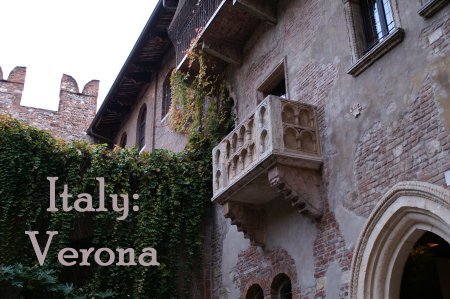
 |
Verona was the last "V" city we saw during our all-too-brief visit to northern Italy. The snowstorm that blew in overnight made us wonder if we'd be able to tour it as planned, but our host and his vehicle were up to the task and we spent a great—though chilly—day taking in its sights, historical and literary.
Here is the blog post for our Italian trip; Verona is in the last section. If you want to see more photos than the few favorites I've displayed here, check out this Flickr set.
Verona is situated on the Adige River, and the old part of town, where we spent most of our time, is where the river makes a sweeping bend. You can explore its geography, and see where the sights I'll be highlighting are located, on this map:
View a larger version of this Verona map here.
Here are a couple of views of this very scenic city on its very scenic river:
 |
 |
One of the most notable aspects of Verona is its ancientness as an urban center. It was an important Roman city, and an amazing relic of this part of its history turns out to be not a relic at all! The Roman Arena, as you can see from this official website, is still very much in use as a venue for operas and other musical and theatrical productions. Our hosts raved about seeing operas there; we wished we hadn't had to come visiting in the off-season! [We did get to see the inside, although not a production, during another trip to Italy in 2017; here's my blogpost about it.]
Unfortunately, we couldn't even go inside, as the Arena was undergoing pretty substantial refurbishment works. But it was quite impressive just from the outside, and we spent a good bit of time walking around it and, of course, taking lots of photos. It was the first and last stop on our Verona tour.
"Two gentlemen visiting Verona": Henry and our host/guide |
me at the Arena |
Some closer-up views. Note the scaffolding in place for the maintenance work. Not surprising this has to be done occasionally, when the structure was built in A.D. 30!
 |
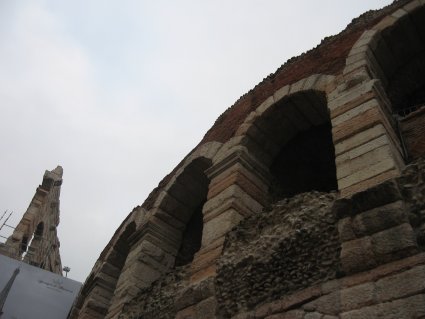 |
|
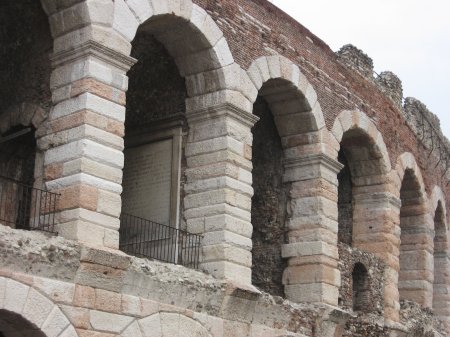 |
 |
Although, according to Wikipedia, the Arena was originally outside of the city walls, it's very much smack dab in the middle of modern Verona, as you can see here:
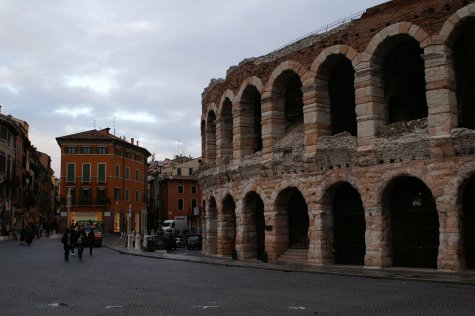 |
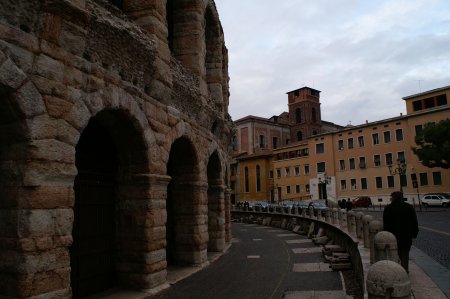 |
It's surrounded by an enormous plaza, the Piazza Bra. On the left below is a shot down one of the streets leading from the Piazza, looking toward the Lamberti Tower, near where we would have lunch a bit later. In the middle is a portion of the Piazza and surrounding shops. On the right is a look down a street aiming toward the Arena, from later in our visit.
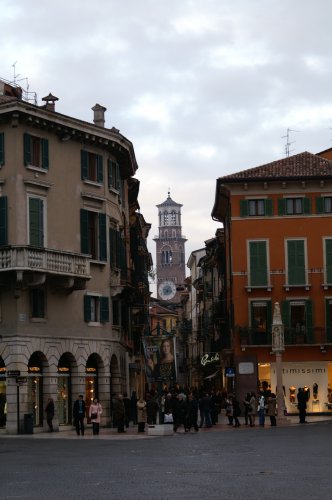 |
 |
 |
Another remnant of Roman days is the Porta Borsari, an ancient gate, which you can see with a modern tourist in front for scale on the left below. The other gate is of more recent vintage. I believe it marks the entrance to the old city, the part that's not as old as Roman old.
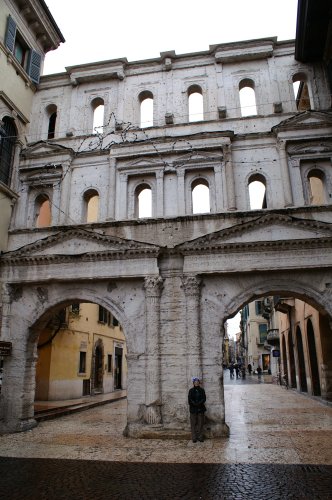 |
 |
Verona's old town is, today, apparently a prime shopping venue. Here's one of the shop windows that caught my eye:

Here are some more lovely Verona streets, taken at various times during our tour. On the left, another look towards the Arena. Note the Christmas decorations on the street in the middle. The picturesque street on the right was near the Romeo and Juliet house (see below); I think it might be Via Cappello.
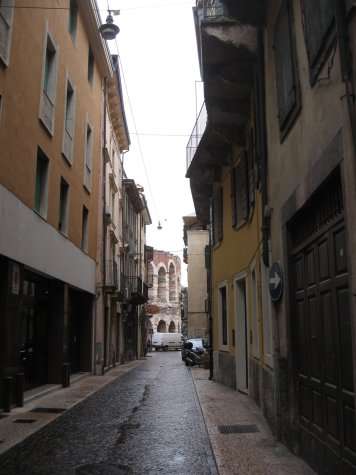 |
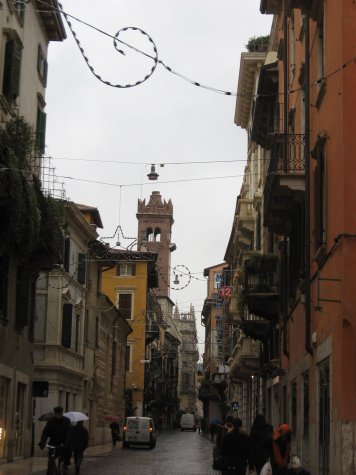 |
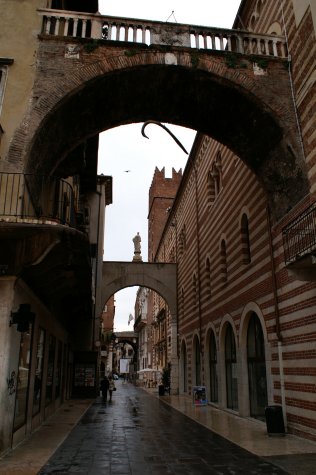 |
We had lunch in a nice little second floor restaurant on the Piazza Erbe, a large plaza with open air market stalls and this exquisite renaissance tower, the Torre dei Lamberti. The photo in the middle was taken from the window of our eatery, the cyclamen providing a welcome splash of color in a rather dreary day (although it was only dreary as far as the weather was concerned).
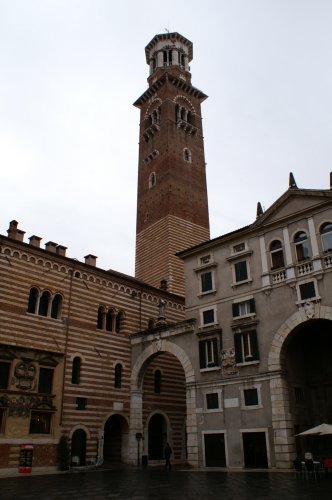 |
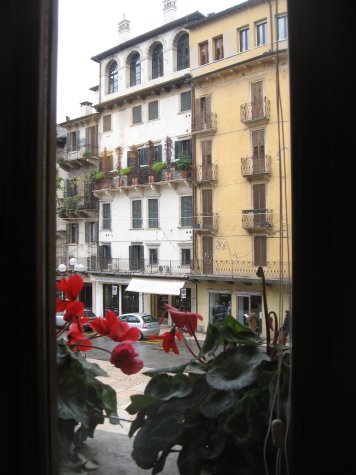 |
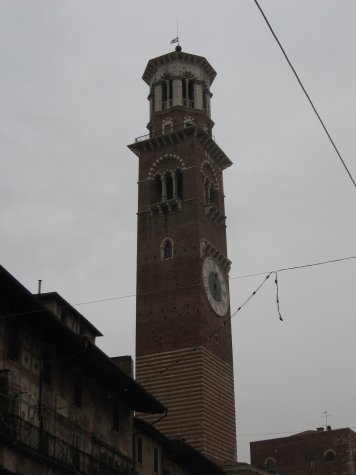 |
In the Piazza you'll find the ubiquitous marker of one-time Venetian dominance: the Lion of St. Mark on a column. I'm pretty sure I took the photo of the lovely frescoes on the right while we were still in the Piazza, or at least nearby.
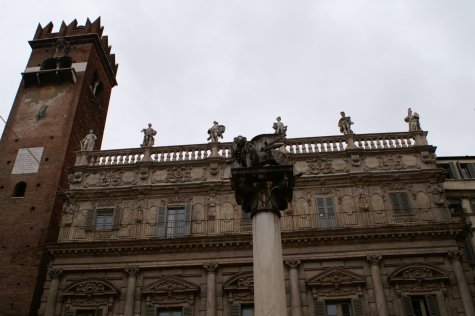 |
 |
Here's another look at the Lamberti Tower, this time from closer to the river, looking back toward the center of old Verona. On the right is another great example of enduring Venetian influence: a wall painted distinctive Venetian red.
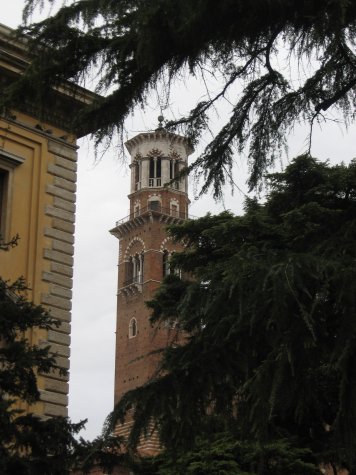 |
 |
Anyone with a passing familiarity with Shakespeare will automatically think of Romeo and Juliet when you say "Verona," and the city's entrepreneurs haven't missed cashing in on this. This "Casa Giuietta" (House of Juliet) on Via Cappello (Capulet?) might? or might not? be the site of the famous balcony. Amazingly, it's actually free to go into this courtyard, where you can see the balcony and rub Juliet's right breast for luck. That's why it's so shiny, as you can see on the right below.
The streets around this house are full of R&J-themed souvenirs that we withstood the temptation to purchase. We also didn't add to the romantic graffiti covering the wall that provides the entrance to the courtyard. But I thought it made a great photo.
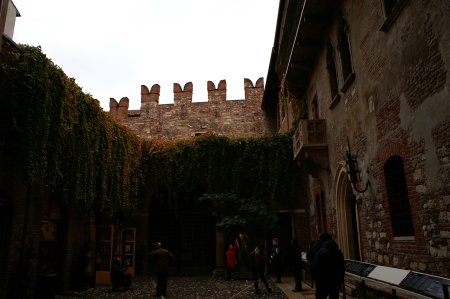 |
 |
|
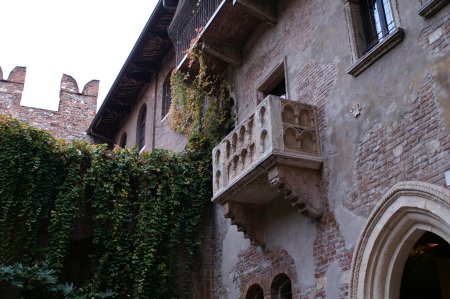 |
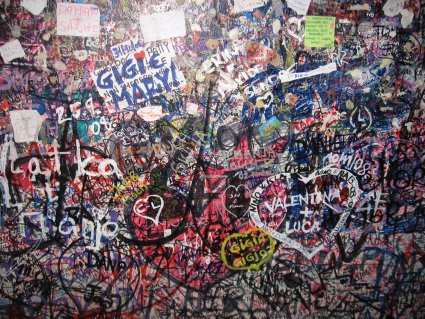 |
Like in any European city, churches are among the most photogenic sights. Here is a really interesting Verona church, San Giovanni in Foro, a very old structure. I don't understand much of the Italian in the Wikipedia article I linked, but I do see the date 1172! Here is the door and a fresco on the exterior wall. Henry tooks some great pictures of the church's interior and I've chosen one to include here. Then, on the right below is a great example of old and new coexisting in modern Italy: a shop next to the ancient church walls.
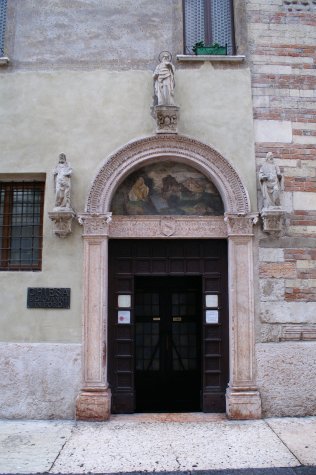 |
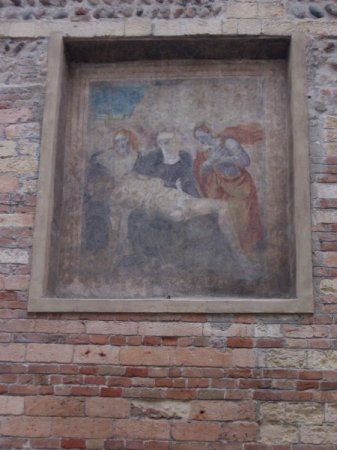 |
|
 |
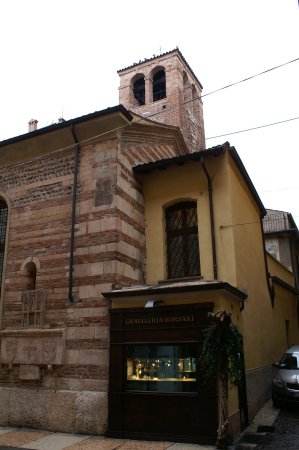 |
|
A slightly newer church is Santa Anastasia, closer to the river.
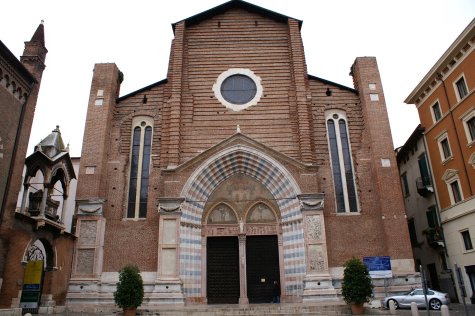 |
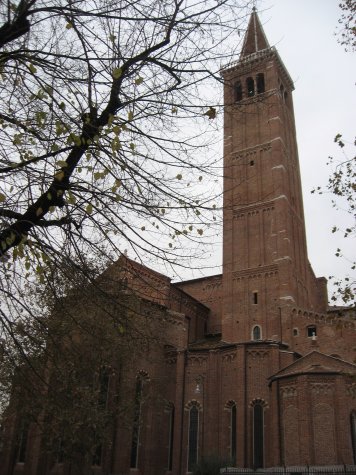 |
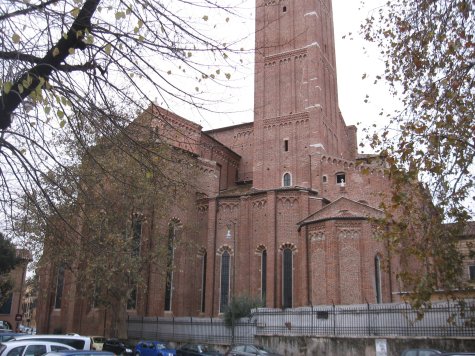 |
See many more pictures of these lovely buildings and other Verona sights this Flickr set.
 |
Back to Dream Season home • Back to Italy home